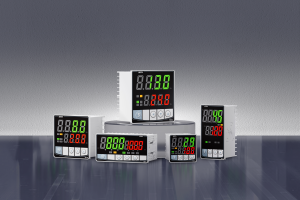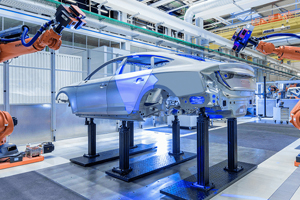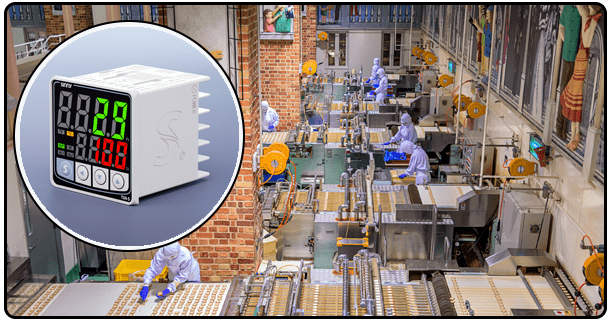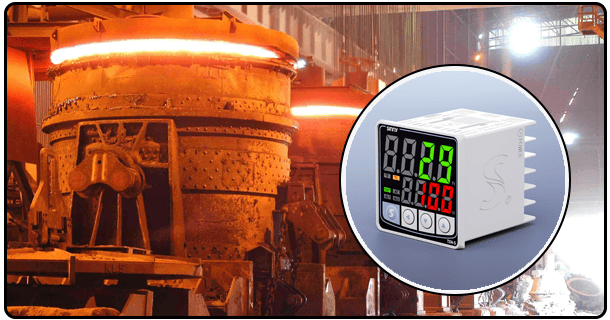The Complete Guide to How To Calibrate A PID Temperature Controller
How to calibrate PID controllers for thermal precision. To optimize performance, follow step-bystep instructions, troubleshooting advice, and the best practices.
1. Introduction
PID Temperature Controller is a vital tool in maintaining accurate thermal conditions for industrial and laboratory uses. The calibration process ensures accuracy, minimises errors and maximizes efficiency. A temperature controller that is not calibrated properly may show instability and result in poor process control.
This guide offers a systematic approach for calibration of a PID Temperature Controller. It covers essential tools, detailed procedures, tips on troubleshooting, and the best practices to ensure long-term stability. Whether you're tuning a proportional-integral-derivative (PID) loop for a heating system or fine-tuning an industrial process, this article will help you achieve optimal control.
2. Understanding PID Temperature Controllers
A controller manages the temperature of a device by controlling its power. The system consists of 3 basic components.
Proportional: Manages immediate responses to temperature variations.
Integral: Eradicates long-term errors by integrating previous deviations.
Derivative D: Predicts errors in the future and stabilises rapid changes.
Calibration: Why it is necessary
Temperature accuracy is ensured.
Avoids oscillations and overshoot.
Process stability is improved.
Enhances the efficiency of industrial applications
A proper calibration will align the controller’s response to actual process conditions. This ensures stable and reliable temperatures regulation.
3. Tool Required for Calibration
You will need the following items to calibrate your device:
Multimeter Measures resistance and voltage.
RTD or Thermocouple sensor: Assures accuracy in temperature measurements.
Process calibration: Simulation of real sensor inputs.
Manual of the manufacturer: Contains calibration reference values.
4. Safety precautions
Safety is paramount when working with heating and electrical elements.
Always ensure proper grounding.
Do not expose the system to high voltage.
Before calibration, check sensor compatibility.
Working in an environment that is free from external temperature variations.
5. Calibration process in steps
Preparing Calibration Setup
Connect the temperature sensors to the controller.
Install the temperature calibrator and simulate the range of temperatures expected.
For accurate readings, ensure that the environment is stable.
6. Setting initial parameters
You can access the PID setting on your controller.
Set any calibrations that have been made previously.
Verify baseline sensor readings to detect initial discrepancies.
Step 3: Readjusting Proportional Integral and Derivative values
Set the PID to default settings as recommended by your manufacturer.
To reduce the steady-state error, fine-tune Proportional gain (P).
Adjust Integral to remove any deviation.
To improve stability, modify Derived (D).
Running test cycles and fine-tuning
Multiple heating/cooling cycle.
Monitor system response via temperature logging.
To achieve the best control, adjust PID values in iterative steps.
Step 6: Calibration results
Record the final PID value for future use.
Validation tests are conducted to ensure performance stability.
Maintain accuracy by implementing periodic calibration schedules.
Troubleshooting & Common Calibration Issues
There are many reasons why calibration discrepancies may occur.
Issue #1: Unstable temperature control or overheating
Potential Cause: Excessive oscillations due to high proportional gains.
Solution: Increase by reducing.
Issue #2: Sensor readings that are incorrect
Cause: Sensor connection fault or drift in calibration.
Solution: Check wiring and calibrate with a reference sensor you trust.
Issue 3: PID Tuning Errors
Possible Cause: Improper integral or derivative adjustments.
Option: You can use the auto-tune functions or manually change values.
Calibration Best Practices
Every six months, perform a routine calibration.
Track performance using , a software that automates monitoring.
Avoid environmental disturbances, such as surges in voltage.
Ensure firmware updates for optimal controller functionality.
The calibration of a temperature controller improves the accuracy and efficiency of industrial processes, and ensures thermal regulation. The regular calibration of PID temperature controllers prevents error, improves the response and ensures constant performance. The best practices outlined will increase precision and reliability.
7. Meta title & Meta description
The article is based on E.E.A.T, which ensures authority, expertise and trustworthiness when calibrating temperature controllers. Do you need additional suggestions for optimization or reference materials?























